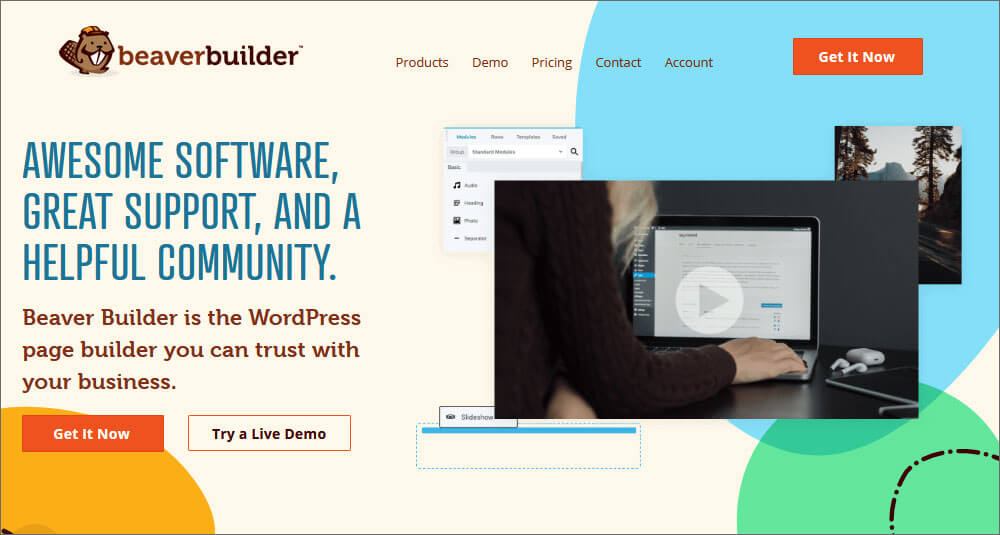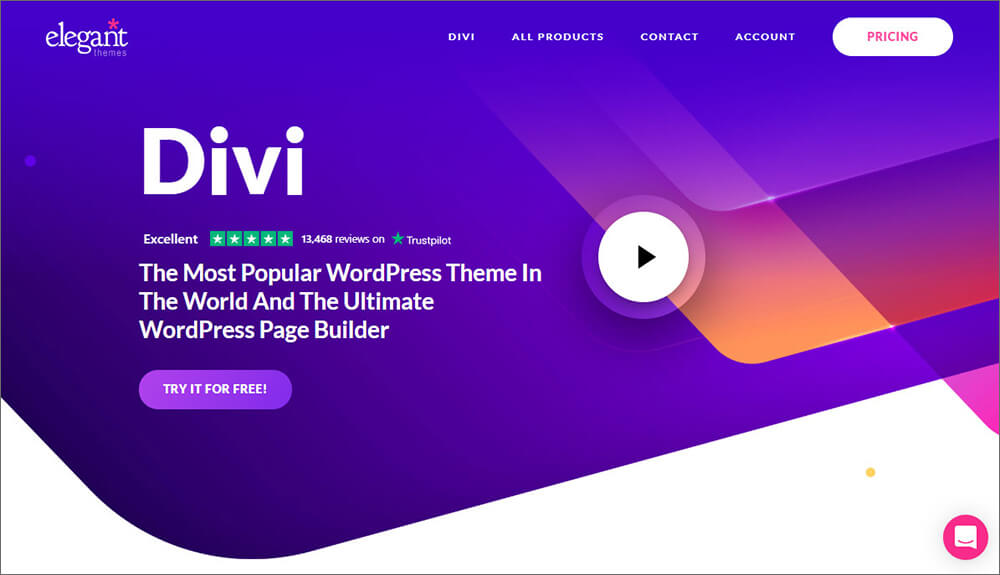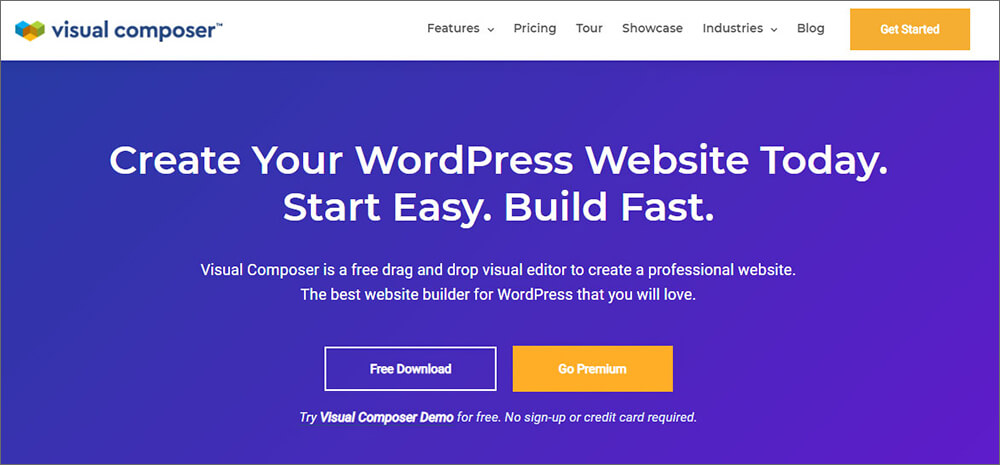If you are working with WordPress, you need a quick and easy way to make the site look exactly as you want.
That is easier said than done.
The default editor that WordPress ships with is not very useful. Sure, it allows you to publish a blog or build a simple website, but for anything more complex, you have to code using HTML, CSS, and JS.
What happens if you don’t know how to code? Writing code is time-consuming and even seasoned developers dislike spending hundreds of hours creating a website. This is where WordPress drag-and-drop page builders make their presence felt and these are the 5 Best drag and drop Website Builders for your WordPress Site
What is a drag-and-drop website builder?
A drag-and-drop builder for WordPress is a tool that simplifies setting up a website. Instead of writing hundreds of lines in an IDE, a developer can simply drag an element out of the sidebar and drop it on the editor window.
If you want to add a contact form or a CTA button to a pre-built layout, you do not need to spend many hours, but insert them directly. This radically reduces the time needed to develop a site and, therefore, brings down the project cost.
To find which is the best drag and drop website builder for your WordPress site, read on.
Best Drag and Drop Website Builders for your WordPress Site
1. Elementor

Elementor is one of the most reputed WordPress website builders.
Its claim to fame is that it powers over 2% of the top million sites on the internet.
At the time of writing, it has 5 million active installs.
Elementor has two products, the website builder and theme library, and these are not to be confused.
Features
- It is an open source software under GPLv3. That means anyone has access to the source code and can change it. It also allows app developers to iron out any integration problems. Open source products are remarkably versatile.
- According to Elementor developers, the key appeal of their website builder for WordPress is responsiveness. That is why the published site loads immediately. Research has shown that 40% of web users abandon a site if it takes over 3 seconds to load. With Elementor by your side, you don’t have to worry.
- There is no need to press preview repeatedly to see what the front end looks like. The live edit feature allows you to change the elements of a webpage, resize and move them around while watching the end result simultaneously. There is no guesswork involved and live editing cuts development time in half.
- Elementor provides over 100 templates of pre-made websites. You can tweak these to your satisfaction. There are also 300 blocks or modules that you could import into the page, including carousels, call-to-action buttons, social media sharing options, white space, dividers, etc.
- Available in free and paid versions. The free version restricts quite a few of the advanced features. Prices start at $49 annually for one website and climb to $999 for 1000 websites. Many consider it the best drag-and-drop website builder.
2. Beaver Builder

Beaver Builder is a very capable drag-and-drop page builder that allows you to create highly aesthetic websites.
Its reputation is rivaled only by Divi and Elementor. Beaver Builder offers a lot of features at a quite affordable price.
Features
- WordPress has a free Gutenberg editor. But it is not very user-friendly. Beaver Builder comes with a handy drag-and-drop website builder that makes it possible to create websites from scratch in a remarkable time. The plugin offers complete WYSIWYG support and you can design the page exactly as you want.
- Beaver Builder has a responsive live editing feature that takes away the guesswork. No need to click the preview tab time and again. Of course, for this feature to work perfectly, you need a responsive theme.
- Beaver Builder works flawlessly with the WooCommerce plugin. An online store probably has the greatest need for customization and a highly efficient drag-and-drop editor is necessary.
- The page builder comes with preloaded contact forms—Gravity Forms and Ninja Forms as well as email plugins—MailChimp, iContact, and GetResponse. Integrated plugins reduce complexity and optimize site structure.
- Beaver Builder is ideal for SEO. You can insert a header, tags, and descriptions that aptly describe the site and every page. An SEO-friendly page builder assures you a higher search ranking and more visitors.
- Beaver Builder has three plans: $99, $299, and $399 annually. All three offer unlimited websites. The higher-priced plans offer access to elegant Beaver Builder themes and White Labeling.
3. Divi

Divi allows you to make beautiful websites without knowing any HTML and CSS.
So confident are the developers that they call their product “The Future of WYSIWYG”.
That might have been considered a deceptive claim if it came from anyone else but Divi.
Features
- Divi is not available on the WordPress plugin website and you have to download it from Elegant Themes. Download the zip file and click install and it’s ready to go.
- Divi calls its drag-and-drop editor the Visual Builder. The user interface is highly intuitive. In the WordPress admin panel, it appears at the bottom left. From that section, you can access, install Divi themes and modify all sections of your site while enjoying live preview.
- The layout comes with rows and columns that can be adjusted. You can add new modules such as contact form, text box, and images by clicking on the menu bar. Each module allows you to alter its dimension and appearance.
- Its major plus point is the collection of over 100 pre-made websites and 800 templates. With a single click, add them to your site. You can use them exactly as they are or alter them to suit your needs. The sheer number of choices eliminates hundreds of hours needed for creating a site from scratch.
- Divi is less expensive than Elementor and Beaver Builder. The annual plan costs $89 and $249 provides lifetime access. That is quite a significant saving compared to the other two front runners, especially since Divi has so much to offer. 18,000 five-star reviews from website developers on Trustpilot prove its trustworthiness.
4. Visual Composer Website Builder

You need a page builder plugin to design a top-notch WordPress site.
So long, the market has been dominated by the Big Three–Elementor, Divi and Beaver Builder.
Visual Composer has begun to make a mark.
It enjoys 90,000 installs and 1.3 million downloads–numbers that are certainly not to be sniffed at.
Features
- The greatest appeal is that you can use it for free. The starter pack with 10 templates and 30 modules is free forever. Of course, you lose out on many brilliant features, but who would refuse an up-to-date drag-and-drop builder that costs nothing. You can upgrade to a paid plan for as little as $49 annually.
- With time, even drag-and-drop builders have become complex and somewhat of bloatware. Visual Composer reverses this trend and looks similar to Weebly and Wix editors a decade ago. An editing panel, few tools on the sidebar, a well-designed navigation layout. not too many options, nor too few. Just what a beginner needs to set up his website.
- Visual Composer has its own marketplace. You can access plugins, themes, and extensions. The marketplace also offers access to premium images to make the site look attractive.
- You can add CSS and JavaScript, append custom headers and footers, and insert short code elements directly from the editor. Apply these locally on a single page or globally as required. Enable or disable features such as lazy load, reverse stacking, and sticky elements as you desire.
5. Themify Builder

The Themify website builder replaces the traditional WordPress block editor and helps create stunning pages.
You don’t have to buy it separately as the builder comes bundled with all Themify themes.
Essentially, you buy the themes and Themify also provides a well-designed builder that allows you to change it quickly.
Features
- Bundled software does not mean the Themify builder compromises on quality. You get over 40 templates or layouts to choose from. If you alter these with custom modules, a simple copy and paste will replicate the change. This feature is useful if you are creating several websites that look the same or multiple product pages.
- No need to worry about third-party plugin compatibility. Themify integrates well with Yoast, WooCommerce, MailChimp, WPML, and other must-have plugins.
- The editor includes a mosaic effect that lets you arrange the images and texts alternately. Both the front end and the back end can be modified easily using Themify builder. Add accordion, box, buttons, and other modules to make the webpage look unique.
- Themify Builder also supports live preview, which makes the task of website creation so much easier. No need to pause at every step and second guess the final result. Keep an eye on the live preview pane and make the changes as quickly as you want. Pro version available for $69 offers even more features.
Finally
Is there one among the above that is best? That answer would vary since they have different UX and are priced accordingly.
For most though, Elementor is a hand-down favorite. Mostly it is because it is open source and has been stable.
If you want an alternative to Elementor, it is best to go for Themify, since it comes for free.



 Oct 26, 2021
Oct 26, 2021 





 Contact us
Contact us 
